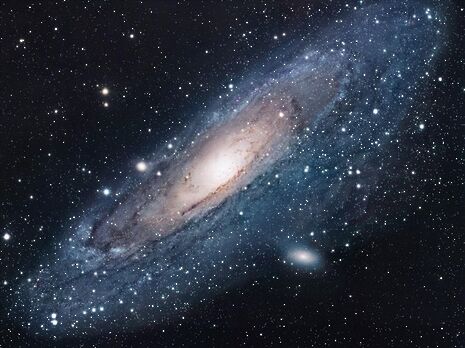Dark matter: The universe’s hole punch
Massive holes punched through streams of stars can tell us about the nature of dark matter

Dark matter – the elusive substance that holds the universe together. We know it exists, but we don’t know where it may lie or what it’s made of. So how are physicists detecting it? By finding giant holes that are ‘punched’ through streams of stars.
Researchers from Cambridge’s Institute of Astronomy, authoring a paper in the Monthly Notices of the Royal Astronomical Society, have found two such holes outside our galaxy in the Palomar 5 globular cluster.
Thousands of computer simulations show that the likely culprits are small clumps of unused dark matter called sub-haloes. These clumps are unused in the sense that they have no stars, gas or dust contained within them, so they appear completely dark.
Dark matter is normally measured by the gravitational pull it exerts on other objects, but because sub-haloes don’t contain ‘ordinary matter’, Dr Denis Erkal and his colleagues had the idea of looking for holes among streams of stars – often remnants of small satellites, like dwarf galaxies or globular clusters, that were once in orbit around our galaxy.
Their remains are stretched out into long and narrow tails of stars called stellar streams: “simple and fragile structures” which “can be fractured if a massive body passes nearby”, according to co-author Dr Sergey Koposov. Crucially, the gap in the stream will be proportional to the mass of the body that created it – a potential way of directly measuring dark matter.
Another important result is that, although these sub-haloes have several million times more mass than the Sun, they are actually the tiniest clumps of dark matter ever detected – smaller than the smallest dwarf galaxy.
Physics theory claims that the smaller the clump of dark matter, the higher the mass of the particles it’s made of. Massive particles move very slowly according to the laws of Brownian motion, causing them to condense into very small clumps – but such huge particles have not yet been discovered. Their trace of sub-haloes provides the first glimpse into what dark matter could be made of, which, according to co-author Dr Vasily Belokurov, could spell a breakthrough.
Dr Erkal is optimistic that looking for holes in streams of stars will allow them to discover even smaller clumps of dark matter. “It’s like putting dark matter goggles on and seeing thousands of dark clumps each more massive than a million suns whizzing around.”
 News / Pembroke to convert listed office building into accom9 December 2025
News / Pembroke to convert listed office building into accom9 December 2025 News / Gov declares £31m bus investment for Cambridge8 December 2025
News / Gov declares £31m bus investment for Cambridge8 December 2025 Features / Searching for community in queer Cambridge10 December 2025
Features / Searching for community in queer Cambridge10 December 2025 News / Uni redundancy consultation ‘falls short of legal duties’, unions say6 December 2025
News / Uni redundancy consultation ‘falls short of legal duties’, unions say6 December 2025 Lifestyle / Into the groove, out of the club9 December 2025
Lifestyle / Into the groove, out of the club9 December 2025









